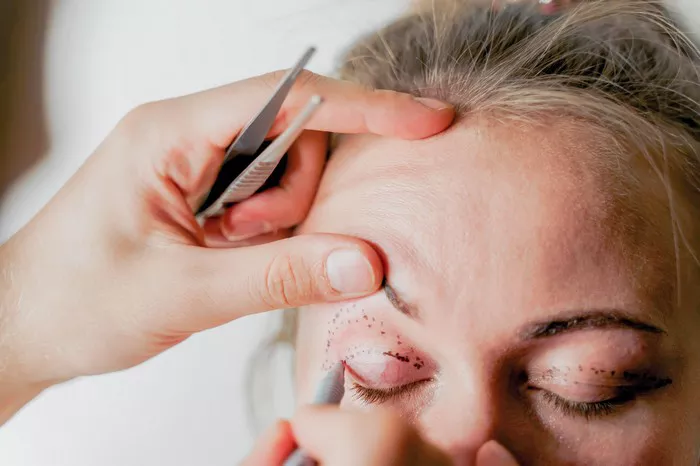Eyelid surgery, also known as blepharoplasty, is a common cosmetic procedure that can improve the appearance of the eyelids by removing excess skin, fat, and muscle. It can also correct droopy or sagging eyelids that may impair vision. If you are considering eyelid surgery, one of the questions you may have is how long it will take to heal. Today, we will explore the recovery process after eyelid surgery, how long it takes to heal, and what you can do to promote healing.
Recovery After Eyelid Surgery
After eyelid surgery, it is normal to experience some swelling, bruising, and discomfort around the eyes. You may also experience dry eyes, blurred vision, and sensitivity to light. Your surgeon will provide you with specific instructions on how to care for your eyes after the surgery, which may include:
- Applying ice packs or cold compresses to reduce swelling
- Keeping your head elevated while sleeping
- Using lubricating eye drops or ointment to relieve dryness and discomfort
- Avoiding activities that may strain your eyes, such as reading, watching TV, or using a computer
- Avoiding strenuous activities or exercise for at least two weeks after the surgery
- Avoiding rubbing or touching your eyes
Your surgeon will also schedule follow-up appointments to monitor your healing progress and remove any stitches, if necessary.
How Long Does it Take to Heal After Eyelid Surgery?
Immediate Post-Operative Period
After eyelid surgery, patients typically spend some time in the recovery room before they are allowed to go home. During this time, the medical staff will monitor the patient’s vital signs and ensure that they are stable enough to leave. The patient will likely have some swelling, bruising, and discomfort around their eyes, which is normal and can be managed with medication and cold compresses.
The First Week After Surgery
The first week after eyelid surgery is typically the most difficult in terms of recovery. Patients should plan to take time off work or other activities to rest and recover during this time. They should avoid any strenuous activity or heavy lifting, as well as any activities that require bending over or straining the eyes. Patients should also sleep with their head elevated to help reduce swelling and promote healing.
During this week, the patient will need to apply ointment to their incisions to keep them moisturized and prevent infection. They will also need to avoid getting water or other substances near their eyes, which can increase the risk of infection. It is important to attend any follow-up appointments with the surgeon during this time to monitor the healing progress.
The Second Week After Surgery
During the second week after eyelid surgery, most patients start to feel more comfortable and are able to resume some of their normal activities. However, patients should still avoid any strenuous activities or heavy lifting, as well as activities that require bending over or straining the eyes. The patient should continue to sleep with their head elevated and avoid getting water or other substances near their eyes.
During this week, the patient may notice some residual swelling and bruising, but it should start to improve. The patient may also notice that their vision is blurry or their eyes feel dry or itchy. This is normal and can be managed with eye drops or other medications as prescribed by the surgeon.
The Third and Fourth Weeks After Surgery
During the third and fourth weeks after eyelid surgery, most patients can resume their normal activities, including exercise and other strenuous activities. However, patients should still be cautious and avoid any activities that may strain their eyes. Patients may still have some residual swelling or bruising, but it should continue to improve over time.
The patient should continue to attend any follow-up appointments with the surgeon during this time to ensure that the incisions are healing properly and there are no signs of infection or other complications. Patients may also start to use makeup to conceal any residual bruising or discoloration.
Final Healing
The final healing timeline for eyelid surgery can vary depending on the individual patient and the extent of the surgery. In general, it can take several months for the swelling and bruising to completely resolve, and the final results may not be visible for up to a year after the surgery.
It is important for patients to follow their surgeon’s instructions for post-operative care to ensure the best possible healing and results. Patients should also be patient and allow their body to heal naturally, without trying to rush the healing process.
Tips for Promoting Healing After Eyelid Surgery
To promote healing after eyelid surgery, there are several things you can do, including:
- Getting plenty of rest and sleep
- Eating a healthy and balanced diet rich in nutrients and antioxidants
- Staying hydrated by drinking plenty of water
- Avoiding smoking and alcohol, which can impair healing and increase the risk of complications
- Taking any prescribed medications as directed by your surgeon, such as painkillers or antibiotics
- Avoiding sun exposure and wearing sunglasses to protect your eyes from UV rays
- Using high-quality skincare products that are gentle and non-irritating to the delicate skin around your eyes
In conclusion, eyelid surgery is a safe and effective way to improve the appearance of the eyelids and correct vision problems caused by droopy or sagging eyelids. The recovery time after eyelid surgery varies, but most people can return to normal activities within two weeks. By following your surgeon’s instructions carefully and taking good care of yourself, you can promote healing and achieve the best possible results from your eyelid surgery.

